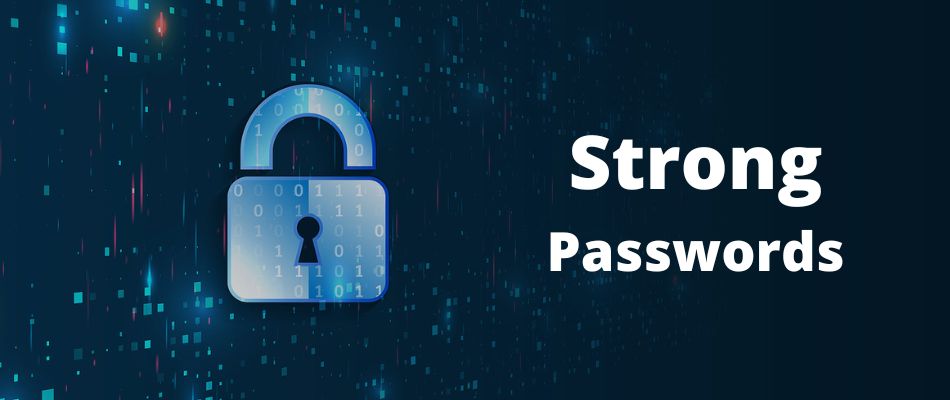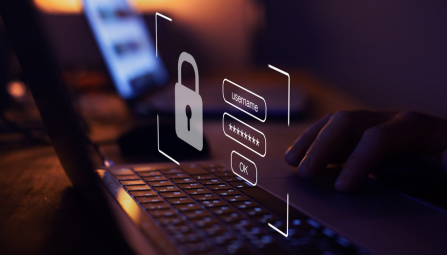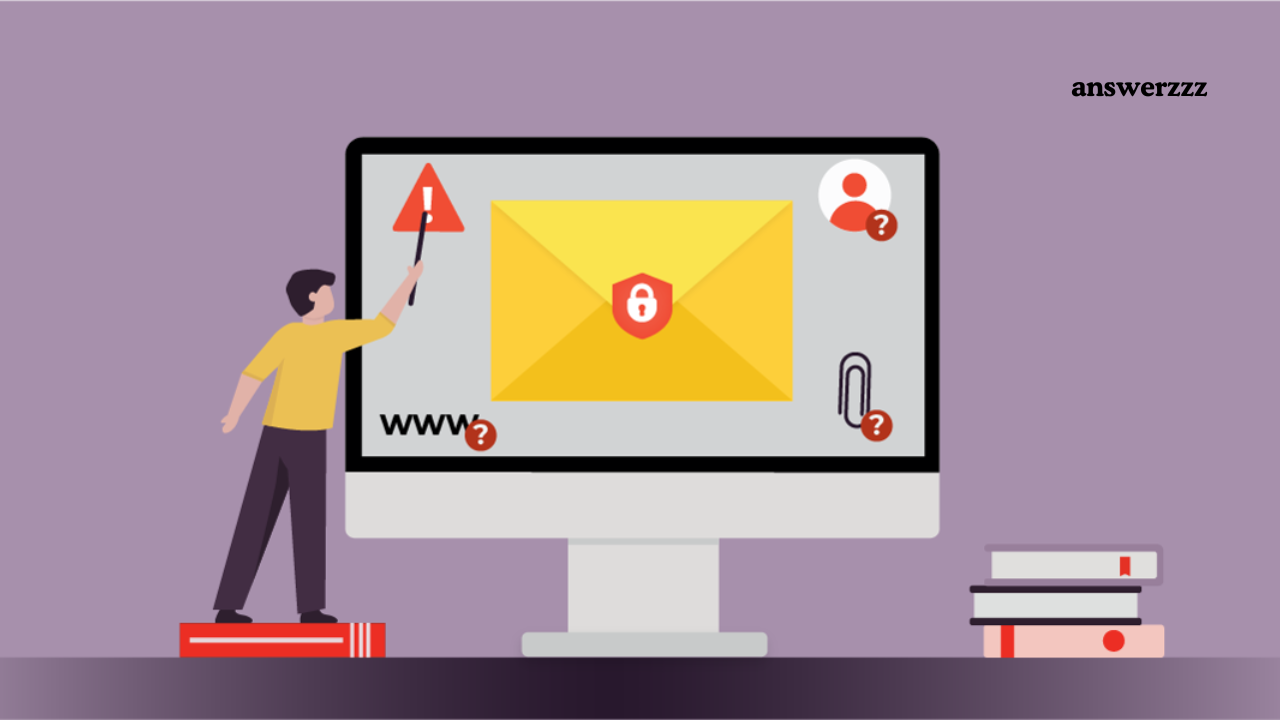In today’s hyperconnected world, digital security is more crucial than ever. With an increasing amount of our personal and professional lives conducted online, safeguarding our data has become a top priority. Whether you’re managing sensitive information or simply browsing the web, staying secure is non-negotiable. This article covers five quick and actionable tips to boost your digital security this year, ensuring your online experience remains safe and private.
1. Strengthen Your Passwords: The First Line of Defense

Passwords are your first line of defence against cyber threats. Unfortunately, many people still use weak, easily guessable passwords that put their accounts at risk. Strengthening your passwords is a simple yet effective way to enhance your digital security.
Why Strong Passwords Matter
Hackers use various methods, like brute force attacks and credential stuffing, to crack weak passwords. A strong password, however, can make it significantly harder for cybercriminals to gain unauthorized access to your accounts.
Tips for Creating Strong Passwords
- Use Long and Complex Passwords: Aim for at least 12 characters, combining uppercase and lowercase letters, numbers, and special symbols. The more diverse your password, the harder it is to crack.
- Avoid Using Common Words or Phrases: Passwords like “123456,” “password,” or “admin” are extremely common and easy for hackers to guess. Steer clear of using personal information like your name, birth date, or pet’s name.
- Enable Two-Factor Authentication (2FA): This adds an extra layer of security by requiring a second form of verification, such as a code sent to your phone or an authentication app. Even if someone manages to steal your password, they won’t be able to access your account without this additional step.
Using Password Managers
Password managers are tools designed to help you store and manage your passwords securely. Instead of trying to remember dozens of complex passwords, you only need to remember one master password. Popular options like LastPass, Dashlane, and 1Password not only store your passwords but also help you generate strong, unique passwords for each account.
2. Be Wary of Phishing Attacks: Don’t Take the Bait
Phishing attacks are one of the most common methods used by cybercriminals to steal sensitive information. These attacks often come in the form of emails, text messages, or phone calls that appear to be from legitimate sources. The goal is to trick you into providing personal information or clicking on malicious links.
Recognizing Phishing Attempts
Phishing attempts can be sophisticated, but there are usually some telltale signs:
- Suspicious Email Addresses: The sender’s email address might look legitimate but often contains subtle misspellings or unusual domain names.
- Urgent Language: Phishing emails frequently create a sense of urgency, prompting you to act quickly. Phrases like “Your account will be locked” or “Immediate action required” are red flags.
- Unsolicited Attachments or Links: Be cautious of unexpected attachments or links, even if the email appears to be from a trusted source.
How to Protect Yourself from Phishing
- Verify the Sender: If you receive a suspicious message, contact the sender directly using a known phone number or email address instead of replying.
- Hover Before You Click: Hover your mouse over links to see the actual URL before clicking. If the link doesn’t match the legitimate site, don’t click it.
- Use Anti-Phishing Software: Many antivirus programs now include anti-phishing features that can help detect and block phishing attempts before they reach your inbox.
3. Keep Your Software and Devices Up to Date: Patch Those Vulnerabilities

Outdated software is one of the biggest security risks for any digital device. Developers frequently release updates to fix vulnerabilities that could be exploited by hackers. Failing to update your software can leave you exposed to cyberattacks.
The Importance of Regular Updates
Software updates often include security patches that address known issues. When you ignore these updates, you are essentially leaving your door open for cybercriminals to exploit.
Best Practices for Keeping Your System Up to Date
- Enable Automatic Updates: Set your devices and applications to update automatically whenever new versions are released. This way, you won’t have to worry about remembering to check for updates.
- Update All Your Devices: Remember to update not only your computer but also your smartphone, tablet, and any smart devices connected to your network. Hackers can exploit vulnerabilities in any connected device.
- Keep Your Security Software Current: Ensure that your antivirus and firewall software are up to date. These tools are your first line of defence against malware and other threats.
4. Secure Your Internet Connection: Don’t Let Hackers In Through Your Wi-Fi
Your internet connection is a gateway to your online activities, and if it’s not secure, you could be exposing yourself to cyber threats. Many people overlook the importance of securing their Wi-Fi network, but this can be a critical mistake.
Smart Home Hacks: 10 Tips for a More Efficient Connected Home
Why Securing Your Wi-Fi Matters
If someone gains access to your Wi-Fi network, they can potentially monitor your online activities, intercept sensitive information, and even access connected devices. A compromised network can lead to data breaches and other serious security issues.
How to Secure Your Internet Connection
- Change Your Default Router Password: Most routers come with a default username and password, which are often easy to find online. Change these to a strong, unique password as soon as possible.
- Use a Strong Encryption Method: Set your Wi-Fi to use WPA3 encryption, which is the latest and most secure standard. If your router doesn’t support WPA3, opt for WPA2.
- Disable Remote Access: Remote access allows you to manage your router from anywhere, but it also creates a potential entry point for hackers. Unless you need this feature, it’s best to turn it off.
- Use a VPN (Virtual Private Network): A VPN encrypts your internet traffic, making it much harder for anyone to intercept your data. This is especially important when using public Wi-Fi networks, which are often insecure.
5. Be Cautious with Public Wi-Fi: Protect Your Data on the Go
Public Wi-Fi networks, like those in coffee shops, airports, and hotels, are convenient but often lack adequate security. Connecting to these networks without proper precautions can expose your sensitive data to hackers.
Risks of Using Public Wi-Fi
- Man-in-the-Middle Attacks: In this type of attack, a hacker intercepts communication between your device and the Wi-Fi network, potentially stealing your data.
- Malware Distribution: Hackers can use unsecured networks to distribute malware, which can infect your device and compromise your security.
- Data Snooping: Anyone on the same public network can potentially see your unencrypted data, such as login credentials and personal information.
How to Stay Safe on Public Wi-Fi
- Avoid Accessing Sensitive Information: If possible, avoid logging into banking accounts or entering credit card information while connected to public Wi-Fi.
- Use a VPN: A VPN provides a secure, encrypted connection, even on public networks, making it much harder for hackers to intercept your data.
- Disable File Sharing: When connected to public Wi-Fi, turn off file sharing and other network-sharing features to reduce the risk of unauthorized access to your device.
- Forget the Network After Use: Once you’ve finished using a public Wi-Fi network, make sure to forget the network on your device. This prevents your device from automatically reconnecting in the future.
Digital security is an ongoing process, and staying vigilant is key to protecting your personal information and online activities. By implementing these five quick tips, you can significantly enhance your digital security this year. Remember, it’s not just about using the latest technology but also adopting smart practices to keep your data safe.
Whether it’s strengthening your passwords, recognizing phishing attempts, keeping your software up to date, securing your internet connection, or being cautious with public Wi-Fi, these actions are straightforward yet highly effective. By taking a proactive approach to digital security, you can enjoy a safer online experience and minimize the risks associated with cyber threats.
Mastering the Metaverse: Tips for Navigating Virtual Worlds Safely
Stay secure, stay informed, and protect your digital world.




